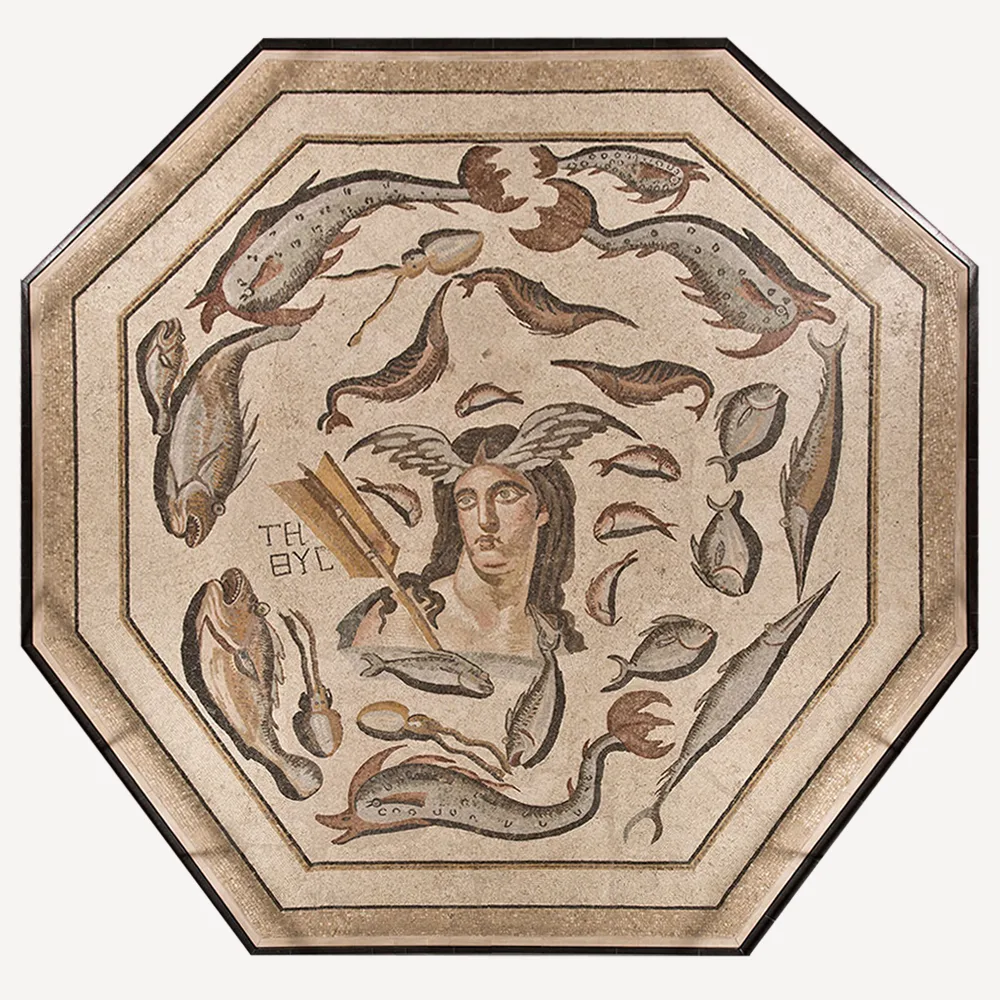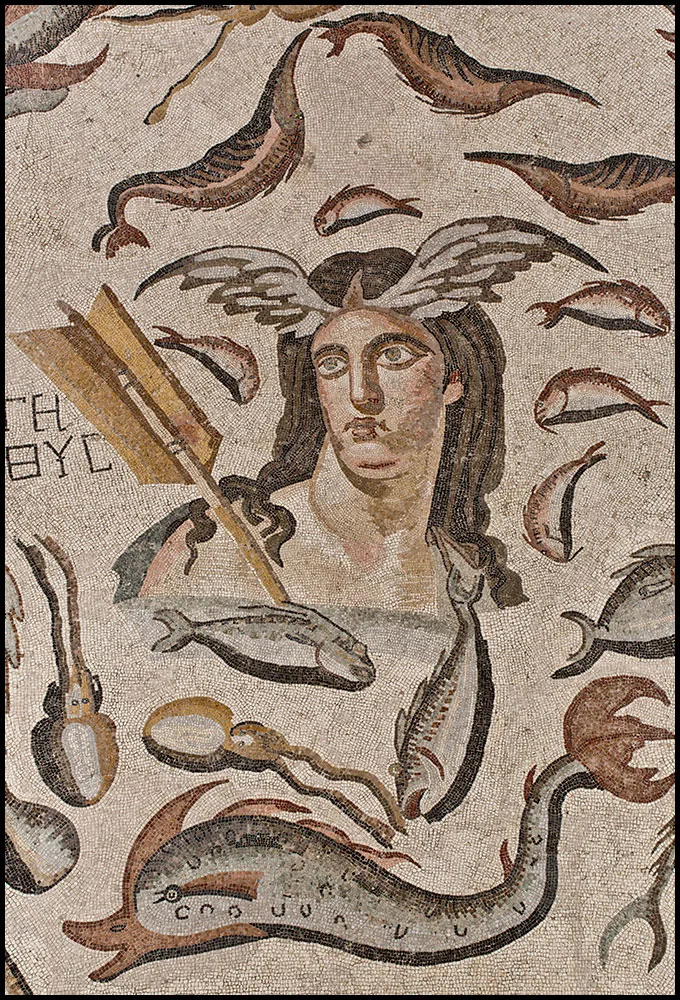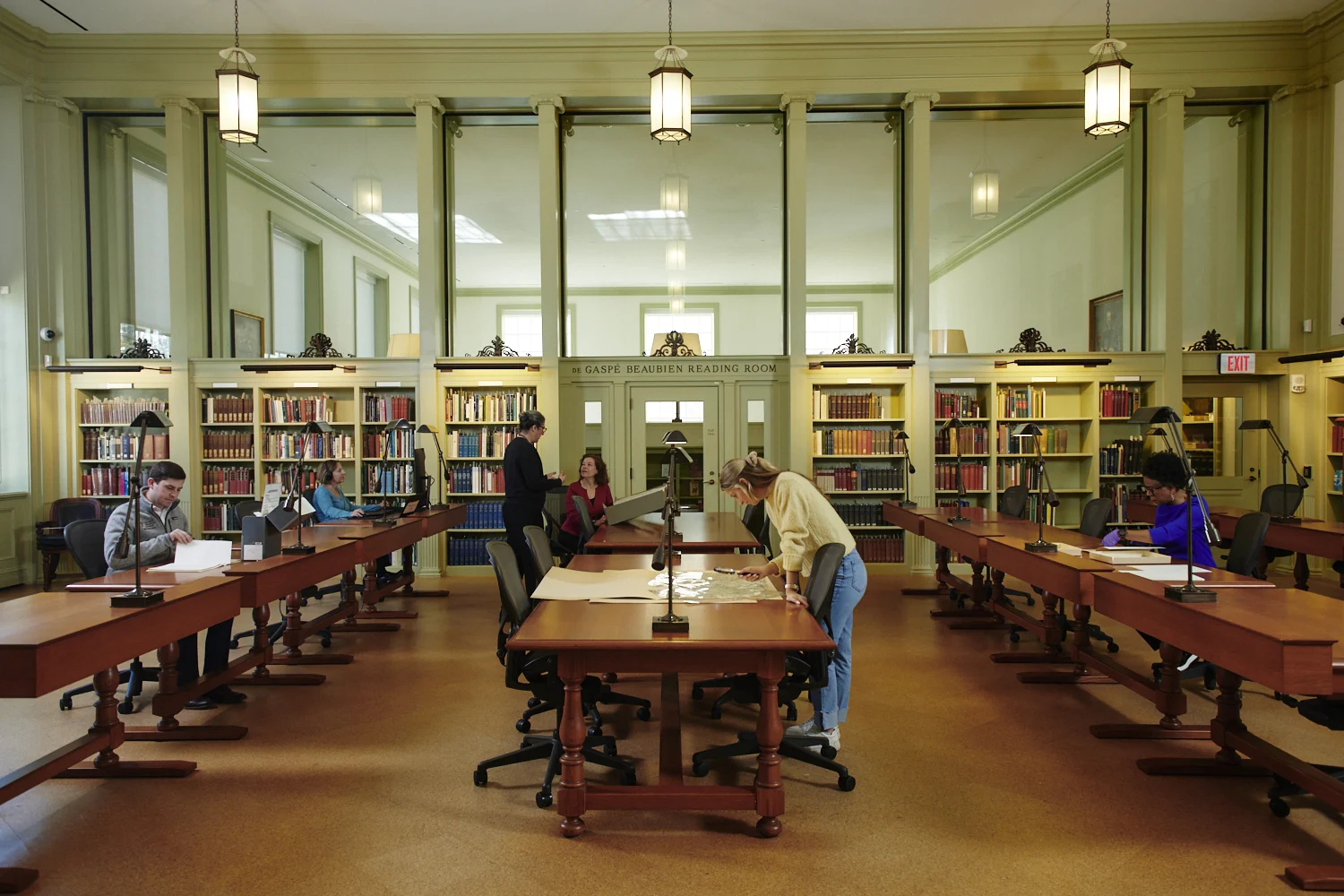Tethys Mosaic
Morgan Hall, Harvard Business School

Founded in 300 BCE, the Syrian city Antioch-on-the-Orontes (in modern Turkey) was a major center and crossroads of the Roman Empire. Goods came in from Persia, India, and Central Asia; the city is also mentioned in Chinese annals. In 1928, Charles Rufus Morey, chair of Princeton’s Department of Art and Archaeology, proposed an excavation of this important site. In 1931, Morey formed the Committee for the Excavation of Antioch-on-the-Orontes, which included the Worcester Art Museum, Baltimore Museum of Art, Musées Nationaux de France, and by 1936, also Harvard’s Fogg Museum (now Harvard Art Museums).
Sponsored by the museums, in 1938, the Tethys mosaic was excavated at Antioch, cut into five pieces, and transported to Cambridge, Massachusetts, where it became part of the Fogg Museum collection but was never installed. Nearly three decades later, in 1967, the museum transferred the Tethys mosaic to Dumbarton Oaks in Washington, DC, where it was on display in the garden courtyard for two decades before being taken down and stored. In 1989, Harvard Business School acquired the mosaic, which has been installed in Morgan Hall since 1991, and is part of the HBS Art Collection.
At nearly twenty-one feet in diameter, the massive Roman floor mosaic is thought to date to the mid-fourth century CE, and is composed of multicolored stone and glass tesserae. The Tethys mosaic originally was submerged in water, created for a pool in an Antioch bath building. Visitors surely admired its central image of the sea goddess Tethys, a fitting subject for a bath not far from the Mediterranean Sea.

The research team has been using X-ray fluorescence (XRF) to identify the glass tesserae’s chemical composition to determine the origin of the glass, because some of the tesserae were not produced locally but rather, imported from other regions. Other tesserae, such as those on the dolphin, are from later restorations of the mosaic.

Antioch Expedition Archives, Department of Art and Archaeology, Princeton University
In this mosaic, Tethys is portrayed with a winged brow and a rudder leaning against her shoulder. While she sometimes is shown next to her husband, the Titan Oceanus, here Tethys is depicted on her own.

Tethys is surrounded by twenty-three sea creatures, including dolphins, squid, and fish such as bass and sea bream, whose colorful glass tesserae scales would have shimmered and sparkled underwater in the ancient pool. Since early 2016, the Tethys mosaic has been the focus of an international research project involving conservators from the Harvard Art Museums.

Antioch Expedition Archives, Department of Art and Archaeology, Princeton University
In this mosaic, Tethys is portrayed with a winged brow and a rudder leaning against her shoulder. While she sometimes is shown next to her husband, the Titan Oceanus, here Tethys is depicted on her own.

Tethys is surrounded by twenty-three sea creatures, including dolphins, squid, and fish such as bass and sea bream, whose colorful glass tesserae scales would have shimmered and sparkled underwater in the ancient pool. Since early 2016, the Tethys mosaic has been the focus of an international research project involving conservators from the Harvard Art Museums.

The research team has been using X-ray fluorescence (XRF) to identify the glass tesserae’s chemical composition to determine the origin of the glass, because some of the tesserae were not produced locally but rather, imported from other regions. Other tesserae, such as those on the dolphin, are from later restorations of the mosaic.

Tethys is surrounded by twenty-three sea creatures, including dolphins, squid, and fish such as bass and sea bream, whose colorful glass tesserae scales would have shimmered and sparkled underwater in the ancient pool. Since early 2016, the Tethys mosaic has been the focus of an international research project involving conservators from the Harvard Art Museums.

The research team has been using X-ray fluorescence (XRF) to identify the glass tesserae’s chemical composition to determine the origin of the glass, because some of the tesserae were not produced locally but rather, imported from other regions. Other tesserae, such as those on the dolphin, are from later restorations of the mosaic.

Antioch Expedition Archives, Department of Art and Archaeology, Princeton University
In this mosaic, Tethys is portrayed with a winged brow and a rudder leaning against her shoulder. While she sometimes is shown next to her husband, the Titan Oceanus, here Tethys is depicted on her own.
These collections are available for use in the de Gaspé Beaubien Reading Room.
Our team is here to help.
